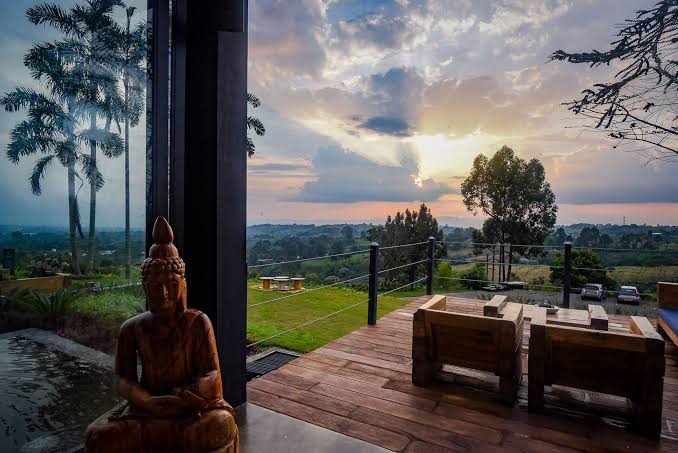While there are obliging financial reasons for suppliers and destinations, travelers are surely anxious to set back out on the road to explorations and discoveries, but this break in tourism has also unlocked the doors to some big questions. Among the most significant is: What is our responsibility to the destinations we visit?

For the past various years, there’s been an increasing emphasis on the impression of sustainable tourism. And while sustainable tourism is about curtailing the strain we place on the ecosystems of the places we tour, many questions if that’s enough in itself or just the onset, that’s where the new concept of Regenerative travel kicks in.
Regenerative tourism is catching attention, particularly in Covid-times although it’s been around a bit. Who wouldn’t want the industry to develop as an elixir and heal the decimation inflicted by the pandemic? Being praised as the smarter, greener, less-crowded post-vaccine rescue to tourism, to Build Back better than the industrial model of the tourism, economy, and GDP.
What is “regenerative travel” and how is it different from “sustainable travel”?

A quick rise in mass tourism in the last decade saw the popularisation of the phrase “sustainable travel”, a trend that motivated travelers and the travel industry at large to minimize their environmental and social consequence by minimizing trash and plastic consumption in hotels, opting for small-group, locally-led tours, and visiting lesser-known destinations and sights.
Regenerative travel, nevertheless, takes sustainable tourism one step further. While sustainable travel aims to equalize the negative impacts related to travel, regenerative tourism is about actively enhancing the social or environmental conditions of your host country.
So you leave a place greener, nicer, and cleaner at your wake, and the next person surpasses your efforts, and the next one does an even better task. At this proportion, we can foresee a bright new world, pretty soon.
Also read:
Ecotourism: A sustainable balance between Tourism and Ecological Conservation
What can we expect from a “regenerative travel” experience?

Regenerative travel isn’t just about reducing your carbon footprint or buying local – it’s about inaugurating real, measurable improvement. This means going on trips that energetically work on enhancing the destinations you visit, whether that be through enrolling in a restoration project or sponsoring a business school for women.
Booking agency Regenerative Travel – an organization born in 2019 out of a disappointment with the eco-resort offering at the time – enables 45 hotels that align with their responsibility to the regenerative travel experience. Each of their carefully appointed resorts, which stretch from safari lodges in South Africa to luxury treehouses in Mexico, go above and beyond your normal eco-resort, from conserving natural habitats and ancient monuments to investing in local education, health, and economic advancement.
Other travel corporations and tourism councils are also struggling towards formulating regenerative travel by trading quantity for quality. Under the guidance of organizations like ConsciousTravel – a consultancy service helping destinations and tour consultant use travel as a force for a favorable change, Visitflanders and Tourism New Zealand will focus less on the financial benefits of travel and more on the health and wellbeing of their populations and environment, as well as offer more important, locally-driven experiences.
What role do travelers play in regenerative travel?

As a traveler, our support is key to the achievement of regenerative travel. Without the need from the international tourist, the initiative simply wouldn’t be economically attainable. But being a regenerative traveler doesn’t have to mean dwelling in luxury eco-resorts or spending dollars on an organized trip. If you are on a budget you visit this website dedicated to Regenerative Travel.
With several resorts tying up with them, they are looking to make an environmental and social influence. These are value directed experiences, with eco-luxury visits, community engagement, resource management, environmental ambitions, and more. It is most certainly a considerable learning experience and enables travelers to travel with a purpose.
Experts acknowledge that the most significant role travelers play in the prospect of regenerative tourism is in their behavior towards sustainability, and in their eagerness to benefit those businesses who are using travel to make the world a decent place.
Like OneSeed Expeditions, an adventure company that utilizes 10% of its proceeds to propose zero-interest loans to businesses in Nepal and Peru. In a nutshell, the activity, the intention, the want, and the chance – for tourism to donate to local as well as national well-being and prosperity.
Hence Regenerative tourism exemplifies our philosophy, values. It’s comprises everything – activity, intent, want, and the chance – for tourism to donate to local as well as national well-being and prosperity, so let’s heal the world and choose wisely!
Also read:
Ecotourism: 9 Natural Heritage Destinations to explore in India
CREO – A secretive non-profit club of the world’s elite combating climate change
















